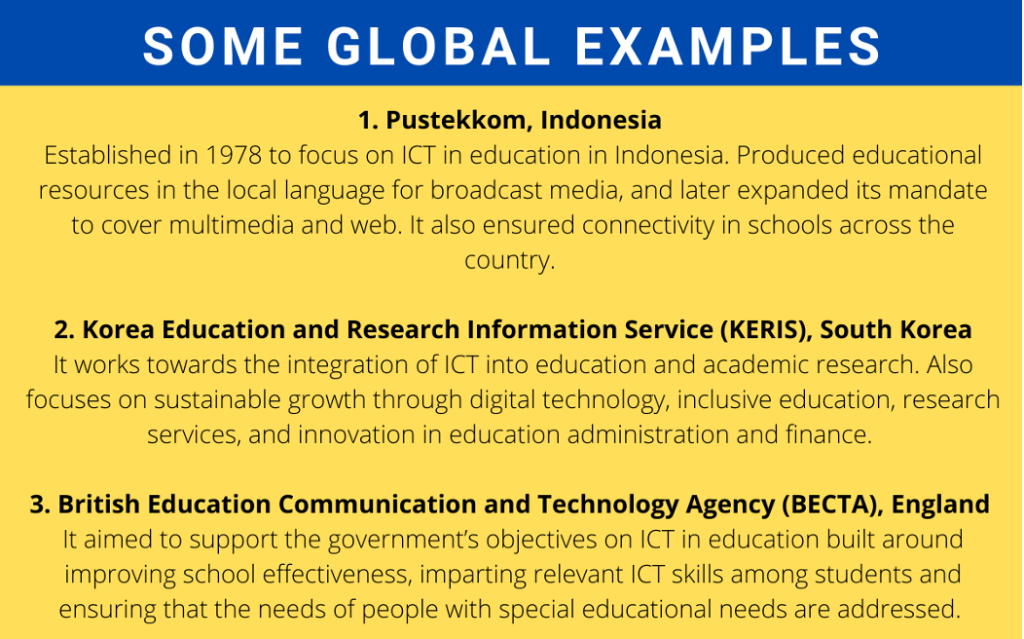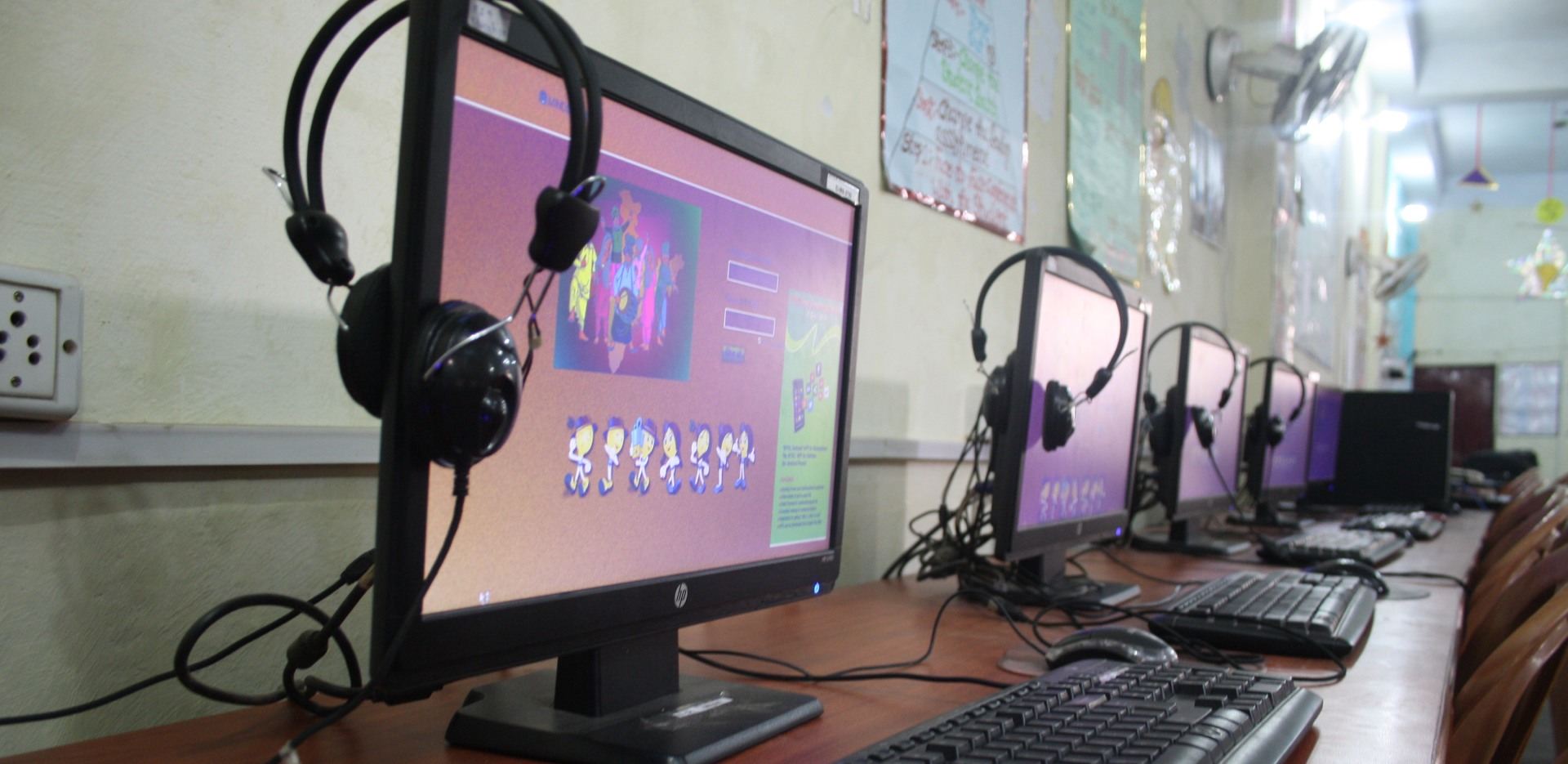The Covid-19 pandemic witnessed significant growth in technology-based learning, as brick and mortar classrooms shuttered and governments, schools and students adopted EdTech solutions instead.
Even with physical classes gradually resuming, EdTech will be key in supplementing classroom instruction with personalized learning and additional practice time after school. It will not only be critical in bridging the learning gap caused by Covid-induced school closures but also provide uninterrupted learning in case schools are forced to shut again due to future waves of the pandemic or any natural calamity. The rapidly expanding household smartphone penetration in rural India will only help accelerate the adoption of EdTech solutions further.
The National Education Policy (NEP) 2020 also recognizes the potential of EdTech, and envisages setting up a National Education Technology Forum (NETF) as a platform for the free exchange of ideas on the use of technology to enhance learning, assessments, planning and administration.
While conversations around NETF are still at a nascent stage, we spoke to leading voices in the EdTech ecosystem to explore the possible role, structure and functions of NETF. And how it can catalyze the ecosystem to enhance student learning through effective integration of technology in education.
Facilitator, regulator, advisor or a bit of all?
EdTech innovation has happened in silos around the world, but there have been limited efforts to map them, and to create standards and a common language applicable to the Indian EdTech context. “The need of the hour is to facilitate conversations, ideas, imagination of the future, create a unifying language for conversations around technology,” said Shankar Marawuda, co-founder and CEO of EkStep Foundation.
While EdTech has played a key role in limiting learning disruptions during Covid-induced school closures, Sridhar Rajagopalan, co-founder and Chief Learning Officer of Education Initiatives (EI), highlights the role of NETF in building a long-term strategy for the sector. “The long-term strategy should involve looking at global and local practices and applying them to challenges in the Indian context,” said Rajagopalan. He also adds that NETF could be a forum that promotes constructive discussion and debate around EdTech.
Utsav Kheria, co-founder of Rocket Learning, believes the forum can offer value in “playing a leading role in identifying solutions that will facilitate learning, promoting synergies between different solutions, and be the talisman in translating solutions into government policy.”

The need of the hour is to facilitate conversations, ideas, imagination of the future, create a unifying language for conversations around technology
Shankar Marawuda, co-founder and CEO of EkStep Foundation

NETF should help build a long-term strategy by looking at global and local practices and applying them to challenges in the Indian context
Sridhar Rajagopalan, co-founder and Chief Learning Officer of Education Initiatives (EI)

It can play a leading role in identifying solutions that will facilitate learning, promoting synergies between different solutions, and be the talisman in translating solutions into government policy
Utsav Kheria, co-founder of Rocket Learning
The views on the role of NETF are diverse and range from delivering expertise to the ecosystem to facilitating conversations around EdTech to being a trusted advisor to governments and the industry at large. There is however consensus that NETF has the potential to galvanize the EdTech ecosystem.
Decentralized and comprehensive representation should be the way forward
In terms of the structure of NETF, Shankar Maruwada advocates for a blended approach comprising diverse players in the education ecosystem. He sees NETF as playing a facilitatory role, as opposed to a regulatory one, and emphasizes that this must be reflected in the structure of the entity, which should have a light footprint, enabling it to serve as a forum for the free flow of information and ideas. Sridhar Rajagopalan echoes a similar sentiment. “NETF should include members from different groups, a majority from the government and the rest from the private EdTech space as well as academia,” he said. A forum that strives to ensure a balance between comprehensive representation and a minimalist structure could be the way forward, allowing clarity of outcomes and efficient decision making.
It must also be determined if NETF should be integrated to oversee all levels of education: school, higher and vocational education or focus on just one. Sridhar Rajagopalan thinks the NETF should have 3 subcommittees, one for each level of education, as there are many cross-learnings that can come out of them.
Ensure NEFT plugs the current gaps in the ecosystem
The functions of NETF should be guided by the critical challenges the ecosystem is facing. While the EdTech market in India is expanding rapidly, integrating technology effectively in education requires deliberate planning and investment, and NETF can be key in ensuring a long-term cohesive vision for EdTech. Gouri Gupta, Director of EdTech at Central Square Foundation, asserts that NETF has to be a trusted advisor to the government as well as a trusted advisor to the ecosystem.
Gupta also points to the need for government mandated standard evaluation parameters to determine the efficacy of EdTech products. “Procurement of EdTech products has been hard for states because there are no standards to evaluate for quality,” she adds.
The functions of NETF should be guided by the critical challenges the ecosystem is facing. While the EdTech market in India is expanding rapidly, integrating technology effectively in education requires deliberate planning and investment, and NETF can be key in ensuring a long-term cohesive vision for EdTech.
Findings also show that there exists a lack of ICT awareness among teachers and parents, and the NETF could also play a role in capacity building and fostering new learnings. Further discussion is also required to align the Ministry of Education’s (MoE) digital learning initiatives such as DIKSHA, SWAYAM and National Digital Education Architecture (N-DEAR) with NETF and ensure they complement one another.

Going forward: Collaboration key for NETF’s success
Conversations around NETF are likely to be more nuanced once the diverse perspectives of the entire ecosystem are taken into account. The need of the hour seems to be strategic, long-term thinking around EdTech, which can only be done through a collective ecosystem approach.
In a recent article in the Hindu, ‘NEP schools: the future’, the authors (Anita Karwal, the Secretary of Education, and Rajnish Kumar, Director Digital Education, MoE), opine, “[Schools of the future] will adopt innovative pedagogies and differentiated instruction as per the needs of the learners to enable them to become knowledge creators, and eventually job creators.” To see this through, it would require all stakeholders in the education ecosystem, along with the MoE, to come together to support NETF in effectively leveraging technology and help learning at all levels for the ultimate stakeholder, the students.



